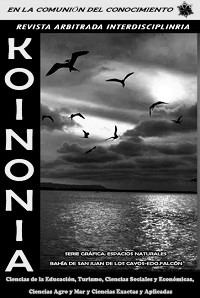Quality higher education as an alternative to economic and social inequality in Peru
DOI:
https://doi.org/10.35381/r.k.v8i1.2795Keywords:
universities, higher education institutions, academic teaching personnel., (UNESCO Thesaurus)Abstract
Universities and institutes do not always connect with society to capture its demands and adapt their training content. However, despite the boom experienced in the supply of higher education in our country, in response to the growing demand, higher education does not have the quality that is needed to demonstrate adequate professional training. The objective was to analyze the higher education of quality as an alternative to economic and social inequality in Peru. We worked with a descriptive documentary research with a bibliographic design, in a population of 13 works related to the research objective. Universities must be the country's main development vehicle; They must train competent specialists and researchers in all fields of knowledge; It must provide basic knowledge and applied knowledge according to the needs of the country and the region. Its most important role is to help understand and transform society.
Downloads
References
Beltrán, A., Castro, J. & Yamada G. (2020). Hacia un programa de crédito de largo plazo para la educación superior en el Perú [Towards a long-term credit program for higher education in Peru]. Universidad del Pacífico. https://n9.cl/2jngz5
Cardona, M., Montes, I., Vásquez, J., Villegas, M. & Brito T. (2007). Capital Humano: Una mirada desde la educación y la experiencia laboral [Human Capital: A look from education and work experience]. Cuadernos de investigación, 56. https://n9.cl/lhy8c
Figallo, F. (2019). Diagnóstico y las lecciones aprendidas de las políticas y programas de educación superior implementadas en el país [Diagnosis and lessons learned from higher education policies and programs implemented in the country]. MINEDU, Perú.
INEI. (2018). Características educativas de la población de 15 a 29 años de edad [Educational characteristics of the population from 15 to 29 years of age]. https://n9.cl/qfel6u
Marsiske, R. & Vera de Flachs, C. (2018). A cien años de la Reforma Universitaria de Córdoba de 1918 y su proyección a Latinoamérica [One Hundred Years after the 1918 Cordoba University Reform and its projection to Latin America]. Revista Historia de la Educación Latinoamericana, 20(30), 7-10. https://n9.cl/82nue
Mungaray, A. (2001). La educación superior y el mercado de trabajo profesional [Higher education and the professional labor market]. Revista Electrónica de Investigación Educativa, 3(1). https://n9.cl/9cbby
OIT (2005). Superar la pobreza mediante el trabajo [Overcoming poverty through work]. https://n9.cl/8rtg8q
San Segundo, M. J. & Petrongolo, B. (2000). ¿Estudias o trabajas? ¿Los efectos del desempleo sobre la escolarización [Do you study or do you work? the effects of unemployment on schooling]. En F. Sáez (Coord.). Formación y empleo (pp. 421-449). Madrid: Fundación Argentaria-Visor Dis. https://n9.cl/3vn0z
Schultz, T.W. (1961) Investment in Human Capital. American Economic Review, 51, 1-17. https://n9.cl/sokcn
SUNEDU (2018). Informe para la transferencia de gestión titular [Report for the transfer of management of the owner]. SUNEDU.
Velásquez, O. (2016). Supervivencia y creatividad de la universidad peruana [Survival and creativity of the Peruvian university]. Editora y Librería Jurídica Grijley.
Villa, L. (2016). Educación superior, movilidad social y desigualdades interdependientes [Higher education, social mobility and interdependent inequalities]. Universidades, (68), 51-64. https://n9.cl/d2bi5
Yamada, G. & Castro, J. (2006). Poverty, inequality, and social policies in Peru: As poor as it gets. https://n9.cl/zw0c0
Published
How to Cite
Issue
Section
License
Copyright (c) 2023 Ronald Palomino-Hurtado, Aarón José Alberto Oré-León, Ofelia Santos-Jiménez

This work is licensed under a Creative Commons Attribution-NonCommercial-ShareAlike 4.0 International License.
CC BY-NC-SA : Esta licencia permite a los reutilizadores distribuir, remezclar, adaptar y construir sobre el material en cualquier medio o formato solo con fines no comerciales, y solo siempre y cuando se dé la atribución al creador. Si remezcla, adapta o construye sobre el material, debe licenciar el material modificado bajo términos idénticos.
OAI-PMH URL: https://fundacionkoinonia.com.ve/ojs/index.php/revistakoinonia/oai.









